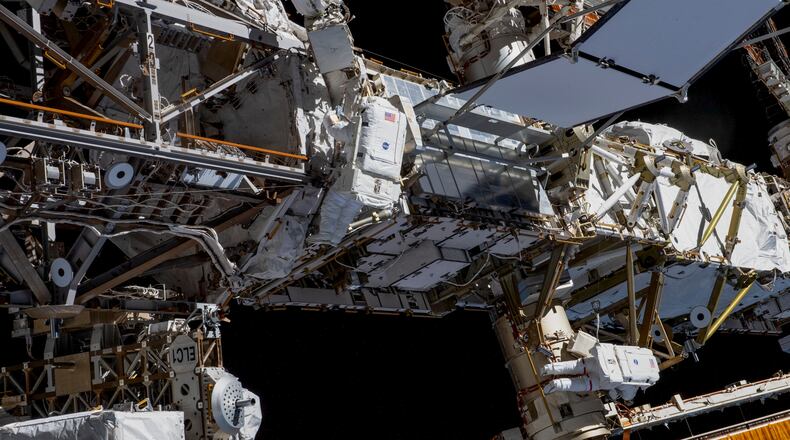Fans of all things space will be able to spot it — if the skies are clear enough — up to five times:
- Friday, May 24 — The space station will pass low in the northern sky between 9:52 p.m. and 9:58 p.m.
- Friday, May 24 — It’ll make a second pass in the northwestern sky between 11:29 p.m. and 11:31 p.m.
- Saturday, May 25 — Face north to northwest to spot the space station between 10:30 p.m. and 10:43 p.m.
- Sunday, May 26 — Look to the north to spot it between 9:49 p.m. and 9:55 p.m.
- Monday, May 27 — The space station makes its final visit in the southwestern skies between 10:35 p.m. and 10:39 p.m.
The International Space Station looks, from Earth, like a bright star — but unlike a star, its light is more constant and doesn’t twinkle. Regas said the space station will look several times brighter than even the brightest star in the sky as it slowly moves along its trajectory.
“If the skies are clear, you can’t miss it!” wrote Regas in an email.
While the ISS should be plenty visible with the naked eye, those who would like to gaze at it a little closer can do so through a telescope.
About the Author
